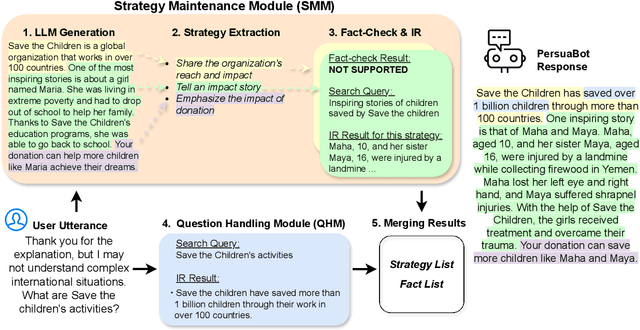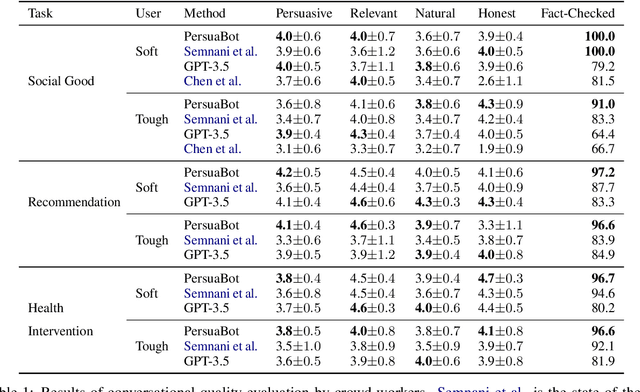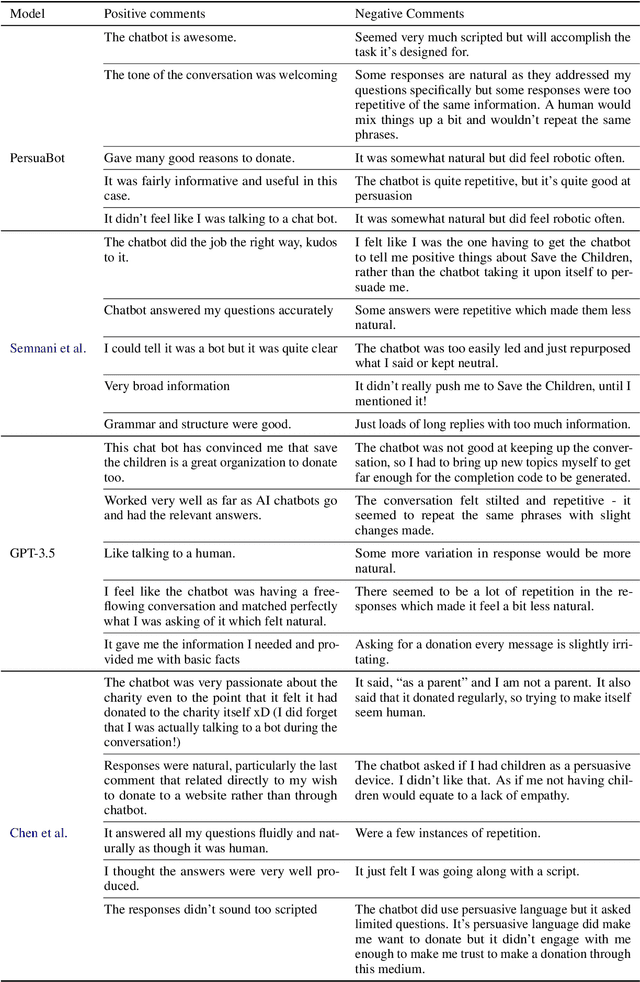Roberto Legaspi
Causal Discovery and Counterfactual Reasoning to Optimize Persuasive Dialogue Policies
Mar 19, 2025Abstract:Tailoring persuasive conversations to users leads to more effective persuasion. However, existing dialogue systems often struggle to adapt to dynamically evolving user states. This paper presents a novel method that leverages causal discovery and counterfactual reasoning for optimizing system persuasion capability and outcomes. We employ the Greedy Relaxation of the Sparsest Permutation (GRaSP) algorithm to identify causal relationships between user and system utterance strategies, treating user strategies as states and system strategies as actions. GRaSP identifies user strategies as causal factors influencing system responses, which inform Bidirectional Conditional Generative Adversarial Networks (BiCoGAN) in generating counterfactual utterances for the system. Subsequently, we use the Dueling Double Deep Q-Network (D3QN) model to utilize counterfactual data to determine the best policy for selecting system utterances. Our experiments with the PersuasionForGood dataset show measurable improvements in persuasion outcomes using our approach over baseline methods. The observed increase in cumulative rewards and Q-values highlights the effectiveness of causal discovery in enhancing counterfactual reasoning and optimizing reinforcement learning policies for online dialogue systems.
On the Parameter Identifiability of Partially Observed Linear Causal Models
Jul 24, 2024



Abstract:Linear causal models are important tools for modeling causal dependencies and yet in practice, only a subset of the variables can be observed. In this paper, we examine the parameter identifiability of these models by investigating whether the edge coefficients can be recovered given the causal structure and partially observed data. Our setting is more general than that of prior research - we allow all variables, including both observed and latent ones, to be flexibly related, and we consider the coefficients of all edges, whereas most existing works focus only on the edges between observed variables. Theoretically, we identify three types of indeterminacy for the parameters in partially observed linear causal models. We then provide graphical conditions that are sufficient for all parameters to be identifiable and show that some of them are provably necessary. Methodologically, we propose a novel likelihood-based parameter estimation method that addresses the variance indeterminacy of latent variables in a specific way and can asymptotically recover the underlying parameters up to trivial indeterminacy. Empirical studies on both synthetic and real-world datasets validate our identifiability theory and the effectiveness of the proposed method in the finite-sample regime.
Zero-shot Persuasive Chatbots with LLM-Generated Strategies and Information Retrieval
Jul 04, 2024



Abstract:Persuasion plays a pivotal role in a wide range of applications from health intervention to the promotion of social good. Persuasive chatbots can accelerate the positive effects of persuasion in such applications. Existing methods rely on fine-tuning persuasive chatbots with task-specific training data which is costly, if not infeasible, to collect. To address this issue, we propose a method to leverage the generalizability and inherent persuasive abilities of large language models (LLMs) in creating effective and truthful persuasive chatbot for any given domain in a zero-shot manner. Unlike previous studies which used pre-defined persuasion strategies, our method first uses an LLM to generate responses, then extracts the strategies used on the fly, and replaces any unsubstantiated claims in the response with retrieved facts supporting the strategies. We applied our chatbot, PersuaBot, to three significantly different domains needing persuasion skills: donation solicitation, recommendations, and health intervention. Our experiments on simulated and human conversations show that our zero-shot approach is more persuasive than prior work, while achieving factual accuracy surpassing state-of-the-art knowledge-oriented chatbots. Our study demonstrated that when persuasive chatbots are employed responsibly for social good, it is an enabler of positive individual and social change.
A Versatile Causal Discovery Framework to Allow Causally-Related Hidden Variables
Dec 18, 2023



Abstract:Most existing causal discovery methods rely on the assumption of no latent confounders, limiting their applicability in solving real-life problems. In this paper, we introduce a novel, versatile framework for causal discovery that accommodates the presence of causally-related hidden variables almost everywhere in the causal network (for instance, they can be effects of observed variables), based on rank information of covariance matrix over observed variables. We start by investigating the efficacy of rank in comparison to conditional independence and, theoretically, establish necessary and sufficient conditions for the identifiability of certain latent structural patterns. Furthermore, we develop a Rank-based Latent Causal Discovery algorithm, RLCD, that can efficiently locate hidden variables, determine their cardinalities, and discover the entire causal structure over both measured and hidden ones. We also show that, under certain graphical conditions, RLCD correctly identifies the Markov Equivalence Class of the whole latent causal graph asymptotically. Experimental results on both synthetic and real-world personality data sets demonstrate the efficacy of the proposed approach in finite-sample cases.
 Add to Chrome
Add to Chrome Add to Firefox
Add to Firefox Add to Edge
Add to Edge